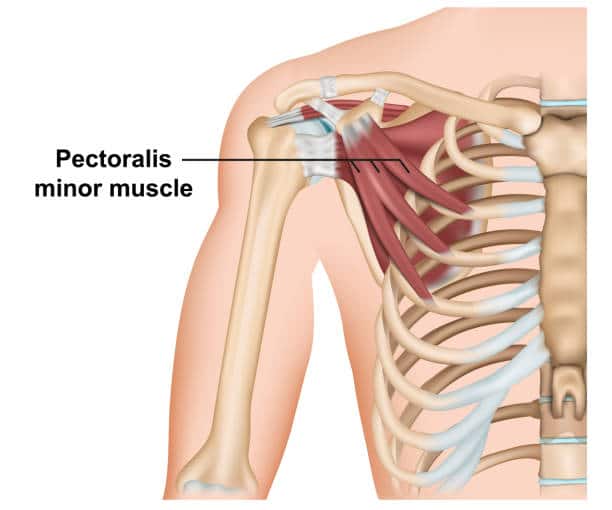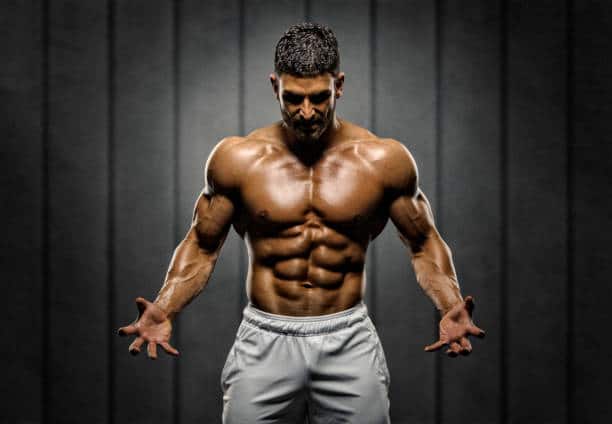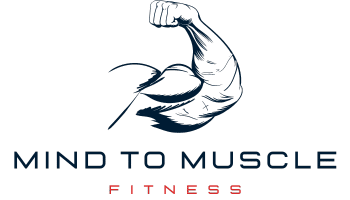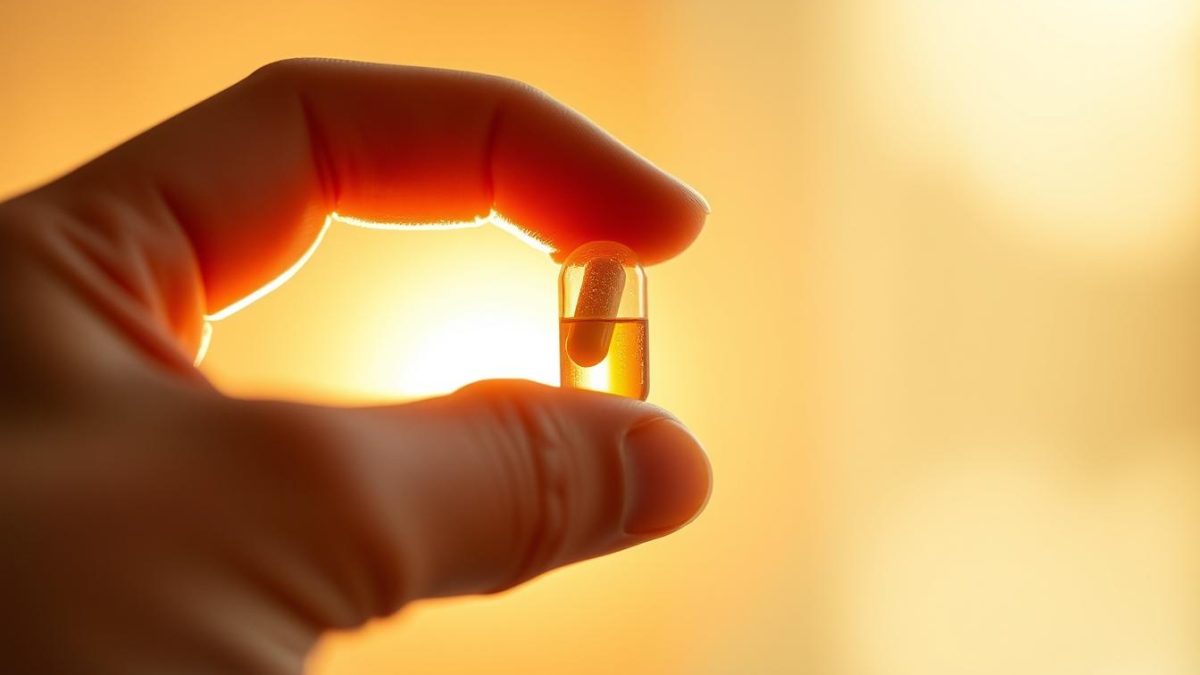
Pectoralis Minor Muscle Workout: Boost Chest Strength
Did you know that pectoralis minor muscle workouts are crucial for improving posture and enhancing chest strength? While many people focus mainly on the larger pectoralis major, the smaller pectoralis minor often gets overlooked. However, targeting this key muscle can significantly boost upper body strength and stability.
Incorporating pectoralis minor training into your routine can yield impressive results. From enhancing chest strength to improving shoulder function, the right exercises can make a significant difference. This guide will highlight the importance of pectoralis minor workouts and show you how they can help you achieve a more balanced and powerful chest.
We’ll cover effective exercises and practical tips for integrating them into your workout regimen. By the end, you’ll fully grasp the significance of pectoralis minor training and be equipped to elevate your chest strength to new heights.
Understanding the Pectoralis Minor Muscle

An essential component of your chest structure is the pectoralis minor. This little muscle, which is situated beneath the larger pectoralis major, is necessary for stability and upper body movements. Understanding the location and function of this muscle aids in appreciating its importance.
Location and Function
The pectoralis minor, which runs from the third to the fifth ribs and connects to the scapula, is located just beneath the pectoralis major. This muscle facilitates motions that pull the shoulders downward and forward, which is necessary for a variety of upper-body muscular tasks. It also helps to stabilize the shoulder.
Importance in Chest Workouts
Including exercises that target the pectoralis minor is essential for a thorough chest workout. By supporting the scapula, this muscle maintains the function of the chest muscles and contributes to balance. If you want to increase your upper body muscular strength and functional fitness, you should concentrate on strengthening the pectoralis minor.
Why Focus on the Pectoralis Minor?
Many people overlook the pectoralis minor in their workouts, focusing primarily on the larger chest muscles. However, incorporating targeted pectoralis minor muscle workouts can significantly boost athletic performance. Strengthening this muscle enhances shoulder function and improves the overall appearance of your chest.
Focusing on the pectoralis minor also plays a key role in injury prevention. Weakness in this crucial muscle can lead to imbalances, increasing the risk of stress and injuries. By including exercises that target the pectoralis minor, you help stabilize your shoulders and reduce the likelihood of injuries.
Additionally, there are notable aesthetic benefits. A well-developed pectoralis minor contributes to a more defined and sculpted chest, which can enhance self-confidence and complete a balanced fitness regimen. This not only supports better performance but also helps you achieve the physique many fitness enthusiasts strive for.
Here are some key benefits of focusing on the pectoralis minor:
| Benefit | Description |
|---|---|
| Enhanced Athletic Performance | Improves strength, stability, and overall effectiveness in various physical activities. |
| Injury Prevention | Reduces the risk of muscle imbalances and shoulder injuries. |
| Improved Aesthetics | Offers a more sculpted and defined chest appearance. |
You can ensure a decreased chance of injury and improved performance in addition to building a stronger chest by providing the pectoralis minor the attention it requires. The next time you’re working out for a well-rounded chest workout, remember to incorporate pectoralis minor workouts.
Effective Pectoralis Minor Muscle Exercises
Effective pectoralis minor engagement necessitates an emphasis on correct form and a range of activities. These three workouts can help you build strength in your regimen.
Incline Dumbbell Fly
The incline dumbbell fly emphasizes the upper chest, which targets the pectoralis minor. Place a dumbbell in each hand and recline on an inclined bench to complete this exercise correctly. Make sure your elbows are slightly bent as you carefully lower the weights. Employ the right dumbbell fly technique to enhance engagement and prevent injuries.
- Incline the bench between 30-45 degrees.
- Lower the weights until your chest feels a stretch.
- Squeeze your chest as you bring the weights back up.
Chest Dips
A great bodyweight chest exercise that really works the pectoralis minor is the chest dip. Arrange yourself with your arms straight on parallel bars. Push yourself back up after lowering your body until your shoulders are below your elbows.
| Step | Description |
|---|---|
| 1 | Grip parallel bars with arms straight. |
| 2 | Lower yourself until shoulders are below elbows. |
| 3 | Push back up to the starting position. |
Push-up Variations
Bodyweight exercises for the chest that include push-up variations, including incline, decline, and diamond push-ups, are beneficial. These variants allow you to target the pectoralis minor differently by changing the exercise’s depth and angle.
- Incline Push-ups: Elevate your hands on a bench to reduce intensity and focus on the upper chest.
- Decline Push-ups: Place your feet on a bench to increase difficulty and focus on the lower chest.
- Diamond Push-ups: Place your hands close together under your chest to target the inner chest areas.
Your chest workouts will be greatly enhanced by regularly switching up your strength training exercises and making sure that your muscles are working together properly. Continue using these exercises in your program to observe observable gains.
How to Incorporate Pectoralis Minor Muscle Workout into Your Routine

Incorporating pectoralis minor exercises into your workout routine can significantly enhance your chest’s strength and functionality. It’s crucial to balance various exercises to target this muscle effectively.
Start by establishing a practical frequency for your chest workouts. Aim to work on the pectoralis minor at least twice a week. Avoid overtraining by allowing sufficient rest days to promote recovery and muscle growth.
Emphasize progressive overload in your training strategy. Gradually increase the weight, repetitions, or intensity of your exercises to challenge your muscles and drive strength gains continually. This method helps maintain steady progress and prevents plateaus.
For a well-rounded routine, balance push movements (such as push-ups and chest dips) with pull exercises (like rows and pull-ups). This approach helps prevent muscle imbalances and supports overall upper-body strength.
Consistency is essential. Track your progress by monitoring improvements in strength, repetitions, and form. Staying committed to your exercises and making thoughtful adjustments will lead to effective pectoralis minor development and overall muscle growth.
Common Mistakes to Avoid
It’s simple to make mistakes when training on the pectoralis minor muscle, which might impede progress. Let’s examine the typical hazards and strategies for avoiding them.
Poor Form
Poor form can significantly hinder muscle growth and increase the risk of injuries. To address this, incorporate corrective exercise techniques into your routine. Maintaining proper form is essential; for instance, keeping your shoulders down and back during exercises helps prevent muscle strain and ensures effective muscle activation. Proper alignment not only reduces the risk of injury but also enhances the efficiency of your workouts.
Overtraining
Overtraining is a common mistake where more isn’t always better. It’s essential to allow your muscles adequate time to recover. Integrate recovery strategies into your routine to prevent muscle fatigue. Ensuring sufficient rest and paying attention to your body’s signals can greatly enhance your training results and overall performance.
| Common Mistake | Solution |
|---|---|
| Poor Form | Use corrective exercise techniques and focus on muscle strain prevention. |
| Overtraining | Implement recovery strategies and ensure adequate rest. |
Warm-Up and Cool-Down Tips
A proper warm-up is essential for enhancing workout effectiveness and safety. Dynamic stretching can activate the pectoralis minor by mimicking the movements you’ll perform during your workout.
For your warm-up, incorporate exercises like arm circles, chest openers, and light dumbbell presses. These activities increase blood flow and prepare your muscles for more intense activity.
Don’t skip the cool-down phase after your workout. It’s vital for post-exercise recovery and reducing injury risk. Perform gentle static stretches, such as doorway stretches or shoulder blade squeezes, to lengthen the pectoralis minor and relieve tension.
By integrating dynamic stretching into your warm-up and static stretches into your cool-down, you protect against injuries and improve overall muscle health and performance.
Benefits of Strengthening the Pectoralis Minor
Focusing on the pectoralis minor muscle offers numerous benefits, starting with improved posture. By targeting this muscle in your workouts, you’ll notice your shoulders naturally align, reducing that common slouch. Better posture isn’t just about looking confident—it also helps prevent back and neck pain.
Another advantage is enhanced upper body strength. Incorporating pectoralis minor exercises boosts overall upper body power, which translates into improved performance in daily tasks and sports. From lifting heavy objects to better control of physical activities, this strength makes a noticeable difference.
Additionally, strengthening the pectoralis minor increases muscular endurance. This means you can perform better and longer during workouts without quickly becoming exhausted. This benefit is crucial for athletes and anyone looking to improve their fitness sustainably.
Finally, a well-developed pectoralis minor contributes to a more defined chest appearance. A toned chest not only enhances your physique but also complements a balanced and resilient body. With these benefits, it’s clear that focusing on the pectoralis minor muscle can be a game-changer for anyone aiming for a stronger, healthier body.
FAQ
What exercises are optimal for enhancing chest strength and upper body muscles?
To effectively boost chest strength, focus on chest-enhancing exercises like the incline dumbbell fly, chest dips, and different push-up variations. These exercises target both the pectoralis major and minor, leading to stronger upper body muscles and improved posture.
Where exactly is the pectoralis minor muscle located and what is its role?
The pectoralis minor is a small muscle situated beneath the larger pectoralis major. Its primary role is to pull the shoulders forward and downward, which is crucial for shoulder stability and overall chest muscle function.
Why is it important to focus on the pectoralis minor during workouts?
Focusing on the pectoralis minor is essential for boosting athletic performance and preventing injuries. Targeting this muscle ensures balanced chest development, enhances shoulder function, and helps prevent muscle imbalances that could lead to pain or injury.
Which exercises specifically target the pectoralis minor muscle?
Effective exercises for targeting the pectoralis minor include the incline dumbbell fly, chest dips, and various push-up variations. These strength training exercises specifically engage the pectoralis minor, enhancing overall chest strength and muscular endurance.
How can I incorporate pectoralis minor exercises into my workout routine?
You can seamlessly integrate pectoralis minor exercises into your routine by scheduling chest-focused workout sessions, practising progressive overload, and balancing push and pull movements. Tracking your consistency and progress is also recommended to achieve the best results.
What are the common mistakes to avoid in pectoralis minor training?
Common mistakes include poor form and overtraining. Poor form can lead to injuries and ineffective muscle development while overtraining can result in muscle fatigue and hinder recovery. By focusing on corrective exercise techniques and proper recovery strategies, you can avoid these pitfalls and improve your overall results.
What warm-up and cool-down tips are important for pectoralis minor training?
Proper warm-up and cool-down routines are crucial for reducing injury risk and enhancing post-workout recovery. Dynamic stretching during the warm-up prepares the chest muscles for activity, while cool-down techniques aid in recovery and minimize the risk of injuries. These practices improve both workout effectiveness and overall muscle health.
What are the benefits of strengthening the pectoralis minor muscle?
Strengthening the pectoralis minor muscle enhances posture, boosts upper body strength, improves muscular endurance, and contributes to a more defined chest appearance. Targeting this muscle plays a crucial role in achieving a balanced and resilient physique.



